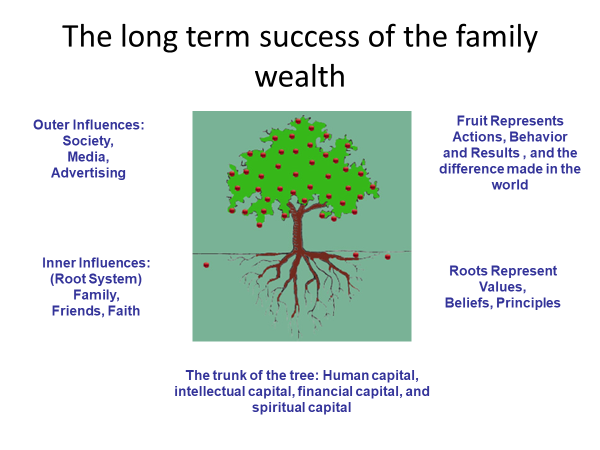The “Dismal Ds” is an inside joke in exit planning. Every industry and profession has them. In some, it’s “You can have it done well, done fast, or done cheaply. Pick any two.” In planning it’s “Sooner or later, every owner exits his or her business… 100% guaranteed.”
Clearly, that refers to the unplanned but inevitable departure from the biggest D – Death. That isn’t the only D, however. There are others, NONE of which lead to a controlled, lucrative, or enjoyable transition. Most start with dis- defined as “dis– 1. a Latin prefix meaning “apart,” “asunder,” “away,” “utterly,” or having a privative, negative, or reversing force.”
The other Dismal Ds include:
- Disease – the critical illness of the owner or an irreplaceable employee.
- Dissension – between partners, shareholders, or family members
- Disaster – Fire, flood, storm, or accident
- Disability – An owner’s inability to oversee operations
- Disinterest – of the founder or next-generation ownership
- Distraction – When an owner’s focus is elsewhere. (frequently love or bar ownership)
- Disarray – More simply, bad management
- Dishonor – financial fraud or other skulduggery
- Disenchantment – A fancy word for burnout
- Divorce – a bitter fight over the business asset or its value
- Debt – Leverage taken on in good times but no longer sustainable
- Depression – Economic malaise (think hospitality in 2020.)
- Defection– The poaching or bolting of a key employee, frequently in sales
- Defenestration – Getting thrown from a window
(Okay, I may have gone too far with that last one, but I couldn’t resist.)
Planning – The Cure for the Dismal Ds
The point is, there are many ways of a forced exit from your business due to circumstances. Some might be beyond your control, but most can be avoided.
- Disease – Have solid business continuity instructions in place
- Dissension – Start with a good buy/sell or shareholders’ agreement that makes it plain how disagreements will be handled
- Disaster – Fire, flood, storm, or accidents can be insured, including for loss of revenue.
- Disability – Business continuity instructions again
- Disinterest – Start implementing an exit plan before your business shows the effect. For example, in brokerage, we used to say “Show me an owner who says he is burned out, and I’ll show you financial statements that evidenced the problem three years ago.”
- Distraction – Don’t buy a bar. Don’t buy another business. Don’t have an affair.
- Disarray – Get help. Consulting, coaching and peer groups all work.
- Dishonor – Have an outside party check your systems and security.
- Disenchantment – See Disinterest
- Divorce – Settle the value of the business first, preferably before the lawyers do it for you.
- Debt – Limit your debt to half what your current cash flow can service.
- Depression – If you have to cut expenses, do so deeply and quickly.
- Defection– Two words- employment agreements
- Defenestration – Stay away from the Departed, or Irish, Italian, and Jewish mobsters in general. Alternatively, live where there are only low-rise buildings.
 I obviously have my tongue firmly planted in cheek for this column, but my point should be clear. Your business is probably the most valuable asset in your life. Losing it to unplanned events hurts. So even if you are no longer in the picture, you have some responsibility to your family, employees and customers.
I obviously have my tongue firmly planted in cheek for this column, but my point should be clear. Your business is probably the most valuable asset in your life. Losing it to unplanned events hurts. So even if you are no longer in the picture, you have some responsibility to your family, employees and customers.
A good exit plan, whether it’s for implementation now or years down the road, should take many, if not all of the Dismal Ds into account. All entrepreneurs want control over their future. That is why they are entrepreneurs. Planning isn’t merely an intellectual exercise. It’s all about control.
John F. Dini, CExP, CEPA is an exit planning coach and the President of MPN Incorporated in San Antonio Texas. He is the author of Your Exit Map: Navigating the Boomer Bust, and two other books on business ownership. If you want to see how prepared you are for transition, take the 15-minute Assessment at MPNInc.com/ExitMap.


 There was another prospect who gave me my “assignment” for proposing. “My son has been in the business for the last ten years. He seldom shows up. He is nominally in charge of a department, but we do little or no business in that area. He’s abusive when he is here, and all the employees hate him.”
There was another prospect who gave me my “assignment” for proposing. “My son has been in the business for the last ten years. He seldom shows up. He is nominally in charge of a department, but we do little or no business in that area. He’s abusive when he is here, and all the employees hate him.”
 Nearly $10 trillion dollars in business assets will be transferred globally in the next decade, according to Forbes Magazine. Baby Boomers selling privately owned businesses or transferring them to family members will comprise much of that $10 trillion dollar transfer. As the market becomes crowded with owners ready to sell, the advantage will go to those owners who have done their due diligence, considered all of their options, and planned for unexpected contingencies.
Nearly $10 trillion dollars in business assets will be transferred globally in the next decade, according to Forbes Magazine. Baby Boomers selling privately owned businesses or transferring them to family members will comprise much of that $10 trillion dollar transfer. As the market becomes crowded with owners ready to sell, the advantage will go to those owners who have done their due diligence, considered all of their options, and planned for unexpected contingencies.